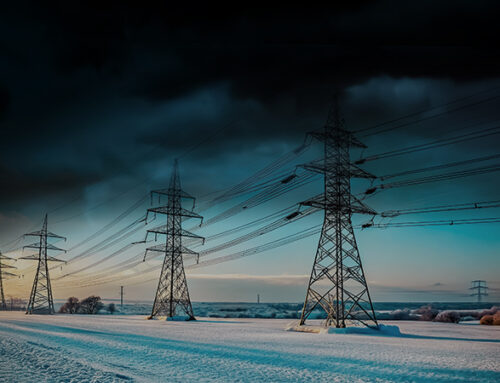The consultation into Ofgem’s minded-to decision in its Targeted Charging Review into residual network charging and embedded benefits closed this week with strong objections being made by renewable and distributed energy bodies who see the proposals as damaging the business models for small embedded generation, demand side response and storage.
“This decision could significantly destabilise the renewables and storage market in the UK at a time when this sector needs a stable regulatory environment for continued investment. BEAMA are very concerned this could de-rail the UK storage market which we understand to be a huge growth opportunity for the UK. We are really keen to work with Government and Ofgem to better align these reforms and ensure they meet the UK’s objectives to decarbonise the energy system and support a market for flexibility,”
– Dr Howard Porter, CEO BEAMA
Fears the proposals will damage the business case for storage and renewables
Many of the objections from the renewables energy sector centre on the argument that the proposals do not support the wider policy aims of de-carbonisation, with some arguing that the “level playing field” desired by Ofgem is not desirable since might incentivise more CCGT and less renewable generation. There are also suggestions that Ofgem’s objective of creating an efficient, cost effective network which reduces bills for consumers should not be elevated above de-carbonisation goal.
“We believe that Ofgem have a duty to consider emissions reduction more centrally and take into account the impact that these reforms will have more broadly on renewable and storage deployment,”
– Regen
They claim that renewable generation, storage and flexible technologies are disproportionately affected and that removing incentives to reduce demand and increasing balancing system charges for distribution connected assets, the reforms will lead to higher costs, greater uncertainty and decreased deployment of these technologies.
In particular, there are complaints that Ofgem’s preferred approach of a fixed cost will penalise large energy users that have invested to reduce their energy demand in response to government policy. As a result, incentives to invest in storage, onsite generation or demand side response will be reduced and the business case for such technologies will be affected. Regen cites figures from Ecotricity that suggest Triad payments made up as much as 50% of the business case for storage assets.
“The objective of the way energy networks are regulated and funded should be to support the UK’s key energy policy aims in the most efficient way – not a chimerical search to reduce ‘harmful distortions’. The objective of reducing ‘distortions’ in one part of the energy system whilst ignoring all the other distortions in the system is flawed,”
– Regen
There are also complaints that the TCR is out of step with the proposed reforms to forward-looking charges, creating un-necessary challenges for the industry to assess the impact of the changes on their business models, which will in turn deter investment.
Renewable energy providers are so concerned by the perceived detriment to their businesses of the changes, that their trade bodies have written jointly to Greg Clark calling on him to prevent “misaligned” reforms to network charging from damaging the low carbon and flexible power sectors and undermining government ambition to create a smart, flexible energy system. They suggest that failure to take “urgent action” could kill the battery storage market.
In the letter, the ADE, BEAMA, the REA, Renewable UK, the STA and Tech UK outline industry’s primary concern that the reviews of sunk costs and forward-looking charges are being undertaken separately with different implementation times, which they believe that will result in limited benefits to networks while damaging renewable and flexible generation. They are also concerned about plans to apply balancing charges to embedded generation.
“Ofgem’s proposals fail their own fairness test . We cannot see how it can be fair that the single occupant of a small flat should pay the same contribution to recovering network costs as a family living in a mansion. And when it comes to the vital issue of carbon, unfortunately once again we are seeing policy penalise companies who have done everything Government has asked of them to reduce their energy use and to invest in smart technologies, like solar and storage. Furthermore, the timing of these changes is totally out of sync with any rewards for ‘smart’ energy use, creating uncertainty for everyone in this important market, and damaging the year-on-year business case,”
– Chris Hewett, Chief Executive, Solar Trade Association
Nathan Bennett of RenewableUK writing in Business Green has warned that proposed reforms from Ofgem run counter to the government’s clean growth and decarbonisation goals – and renewables projects could suffer as a result
“For anyone concerned with meeting our climate targets, facing up to the upcoming generation gap, and delivering the government’s clean growth strategy, this is review is a blow. Worse still, it’s one I’m not even convinced meets Ofgem’s aim of maximising consumer benefit,”
– Nathan Bennett, RenewableUK
Bennett believes that Ofgem does not understand the current financial landscape in which large-scale renewables generators operate, with increasingly competitive Contract for Difference auctions leaving little room to absorb additional costs, and no ability to renegotiate the contracts of projects already commissioned. However, he also argues that additional costs created by the TCR would be passed on to consumers through future CfD auctions and higher prices, which rather contradicts the argument that the economics of renewables projects will be compromised.
He goes on to say that the more interesting conversation is around the application of BSUoS charges to smaller distribution-connected generation, as well as the removal of the payments they receive from suppliers, which will impact all projects at all scales. Regen has suggested that the changes to BSUoS could cost distributed assets as much as £4-5/MWh
“The outcome of all this is the risk of making low cost renewables more expensive, which means higher costs for consumers,”
– Nathan Bennett, RenewableUK
It’s not just the renewables and storage lobbies that oppose Ofgem’s proposals:
“By putting in place a fixed charge, it would be dis-incentivising those which have endeavoured to have an energy efficient home, with energy efficient electricity appliances and decarbonised heat; it would be undermining the necessary investment for a flexible energy system (electric vehicles, storage, solar pv); it would be undermining of business models which can provide more flexibility (demand side response); it would be undermining those technologies which can bring down total peak capacity needs, and therefore bring down the overall average price of electricity, as well as peak price of electricity; and it would be undermining innovation, vital for energy system transformation,”
– Energy Policy Group, University of Exeter
However consumer groups have been more positive, broadly welcoming the proposals while expressing some caution around mitigating the effects on certain groups of vulnerable consumers. Citizens Advice prefers the Agreed Capacity approach and supports the changes to embedded benefits.
“It’s the right thing to do: Ofgem is right to address the issues with the residual network charge. Distortions are likely to worsen as more users are able to avoid network charges through installing on-site generation. This puts an increasing burden of costs on users who are unable to take actions to reduce their network usage. Residual charges should not send signals to users to change behaviours,”
– Citizens Advice
The need for flexibility is not going away, providing new revenue opportunities
The concerns raised by the renewables and storage industries may be well founded, however they only tell part of the story, and while there may be some justification in the complaints that the residual and forward-looking charging elements are not being changed in step with each other, there are pros and cons of Ofgem’s approach, not least that the whole subject of network charging is highly complex and there are challenges with making too many changes at once.

At the heart of Ofgem’s motivations is the desire to avoid the distorting effects of residual charging which are not intended to incentivise changes in consumer behaviour. Inevitably there will be winners and losers of such changes, and since residual charge recovery is a zero-sum game, users that reduce their exposure through triad avoidance lead to increased costs for those users that are unable to take avoiding actions.
This explains why consumer groups are more positive about the proposals – disadvantaged and vulnerable consumers are penalised twice under the current charging arrangements since not only are they unable to reduce their costs through investment in efficiency measures such as more efficient appliances, better insulation, domestic solar and storage etc, but also see their costs rise due to the cost avoidance of other, more affluent consumers (and businesses).
While it is understandable that affected industries will lobby against the reduction in the benefits they may realise from their investments in efficiency and cost reduction measures, it is far less clear why academic bodies would prefer to see current arrangements persist to the detriment of vulnerable consumers.
These objections also fail to recognise the wider picture. According to npower, triad avoidance results in a reduction in peak demand of around 2 GW and significant flattening of peak demand. This is a significant portion of Winter demand, and the need to meet this capacity will not disappear with the demise of triad-avoidance benefits. The closure of the aging coal plant (EDF announced last week the closure of its 2 GW Cottam coal plant) and the delay in advancing new nuclear both threaten supply margins and lead to the need for additional capacity.
At the same time, the increase in renewables penetration has led to a growing need for frequency management services as well as various network reinforcement costs to allow for the different locations of renewable generation versus conventional thermal plant.
This means that the fundamentals for small embedded generation, on-site generation and storage remain strong, with the challenge being to convert these theoretical benefits into viable business models. These models are likely to focus more on traditional sources of income and cost management such as wholesale energy cost optimisation, the Balancing Mechanism and various ancillary services.
In addition to traditional grid service provision to National Grid, there is a developing market for local flexibility services to Distribution System Operators. All of these services are likely to become more valuable as system operators will need to compensate asset owners for lost income elsewhere (if the assets are to remain available to the system).
In addition, capacity income will continue to be available, either through a re-instated Capacity Market or through other means such as new versions of the Supplemental Balancing Reserve, the Short-Term Operating Reserve or similar mechanisms.
One of the concerns raised by the storage and renewables lobbies is whether these alternative income streams will be available when the network charge proposals come into effect. There is some risk here, however, the lead times to implementation of the TCR reforms are fairly long, and system operators need to plan for the needs of their networks in time to deliver the required solutions to maintain service reliability.
This means that it is likely that if a market service such as flexibility or additional capacity is required, the mechanisms for delivering the service will be developed in time to meet the need – in the case of new products there may be a gap, but much of the replacement revenue is likely to come from existing market mechanisms.
The ability to take advantage of rising prices in these markets should provide ongoing incentives for investments in efficiency measures, demand-side response, small embedded generation and storage. Business models will change, but the need for flexibility in the electricity system is not going to go away, and with the continuing rise in electricity prices, deployment of these technologies will continue to have value.







Leave A Comment